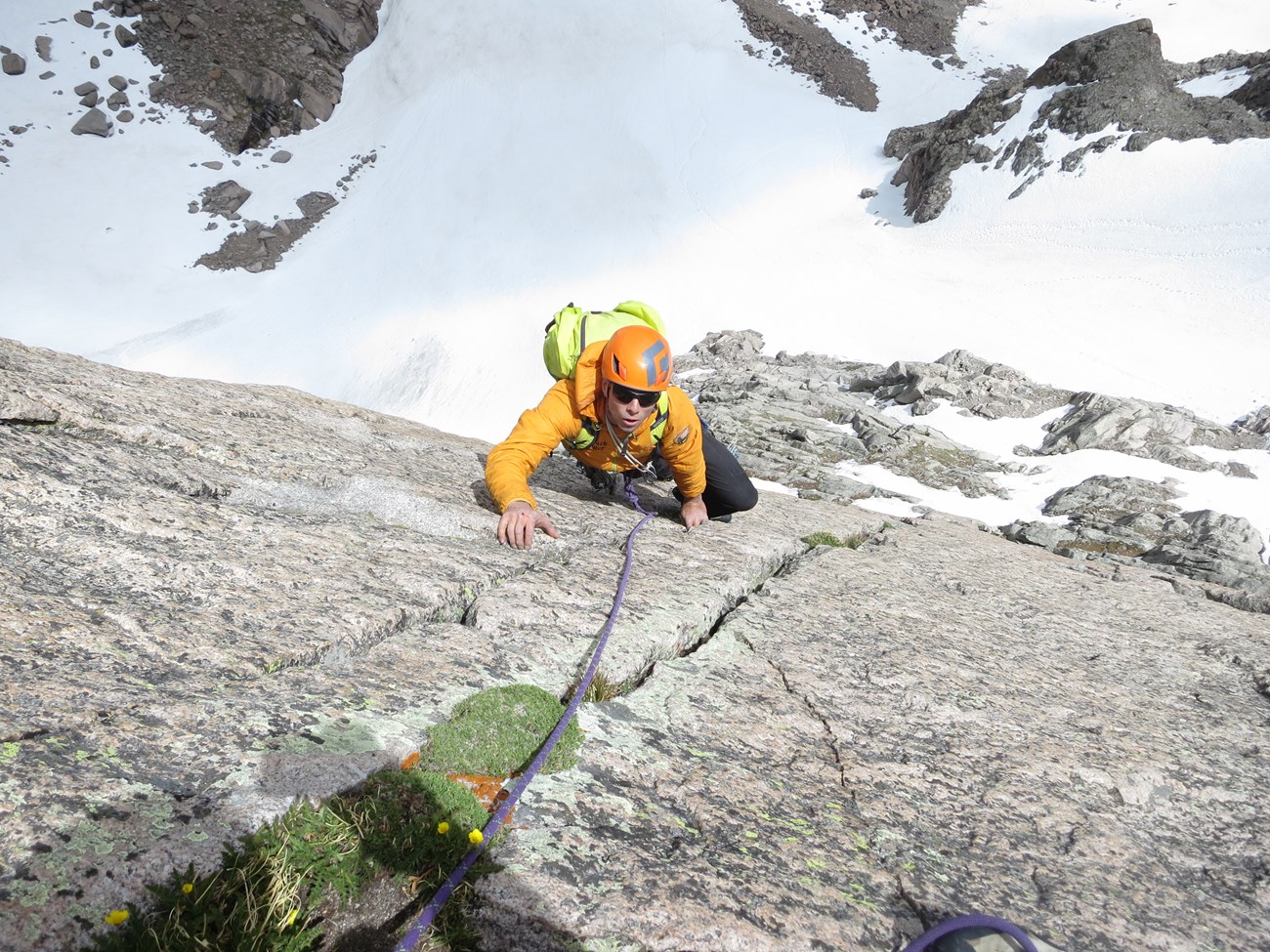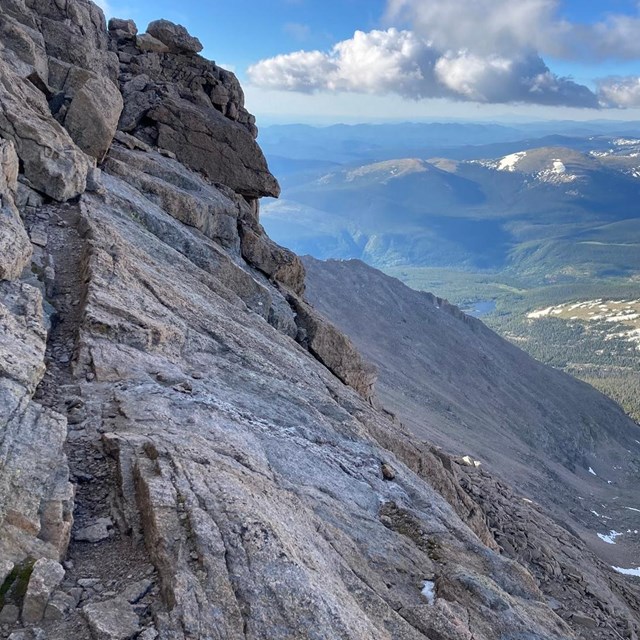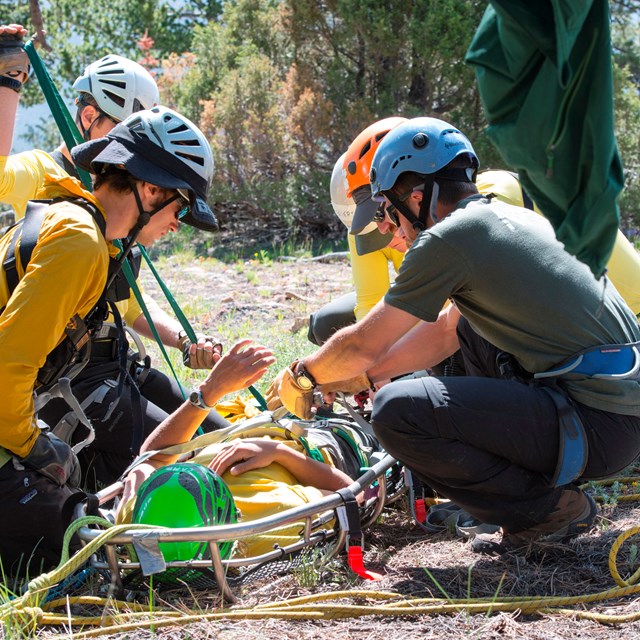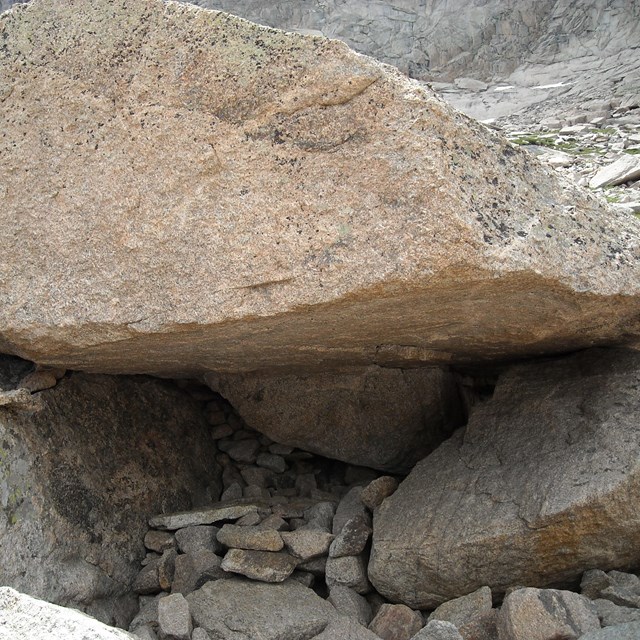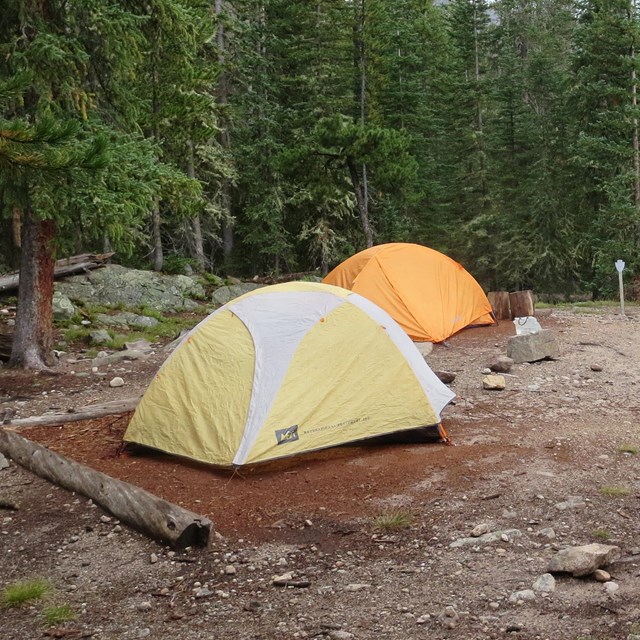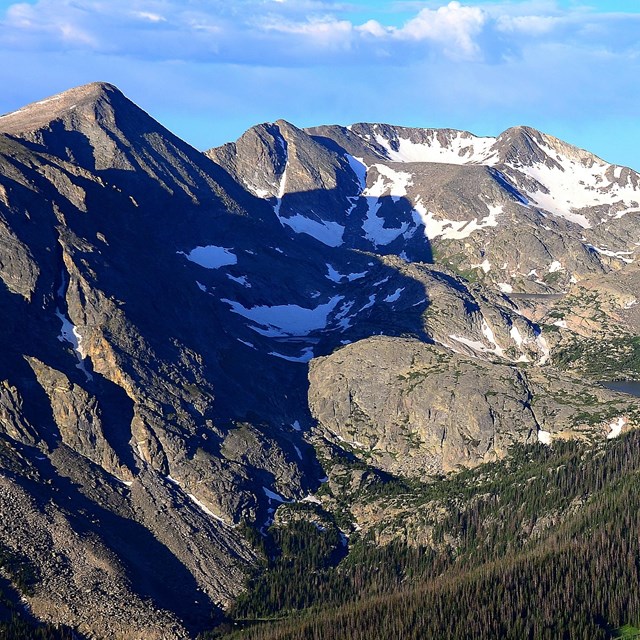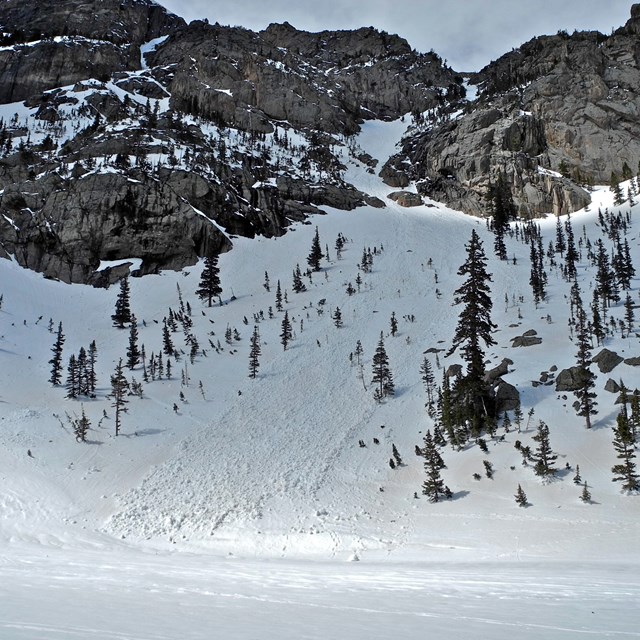Climbing Ethics
All visitors who climb in RMNP are asked to take personal responsibility for the care of the fragile resources we all love. To accomplish this goal, please adopt this code of ethics for low impact climbing and share it with your fellow climbers:
- Accept responsibility for yourself and others.
- Use wag bags and pack out all human waste. Use toilets when available.
- Carry out all climbing gear. Stashed ropes, rock protection, and bouldering pads are considered abandoned property as well as trash. Leaving climbing gear behind harms wildlife, damages wilderness areas, and is illegal.
- Use existing access trails to approach climbs. Tread lightly when this is not possible, walking on durable surfaces. Avoid short-cutting trails which causes erosion and plant damage.
- Know and respect historic and environmentally sensitive areas.
- Be considerate of wildlife and other users.
- Leave the rock and its environs in its natural condition. Avoid placing permanent protection and altering the rock in other ways such as chipping and gluing.
- Renew your commitment to follow Leave No Trace principles.
- Know and abide by local regulations.
Overnight Permits
Climbers who wish to stay overnight in one of the park's Wilderness Technical Climbing Bivouac Zones should contact RMNP's Wilderness Office at 970-586-1242 for specific information on permit procedures, backcountry conditions, and climbing regulations. A permit for day-use climbing or mountaineering is not required.
Be Prepared for Anticipated Conditions
Mountain conditions are often vastly different from those in the valley. Snow often stays in the mountains until mid-July. Afternoon storms can pop up without warning and bring lightning, rain, and hail to the peaks. Rockfall can quickly change a route. Conditions in the mountains can change suddenly.
Always be prepared when traveling in Rocky Mountain National Park.
- Check conditions before heading out
- Pack for variable and changing weather
- Let someone know your plans, and what route you plan to take and stick to your plan.
- Be prepared to turn around if conditions worsen, if you are not feeling well, or if members of your party are ready to turn back. It is always ok to turn around and try another day.
For more information on lightning safety when climbing, visit the park's Lightning Safety webpage.
